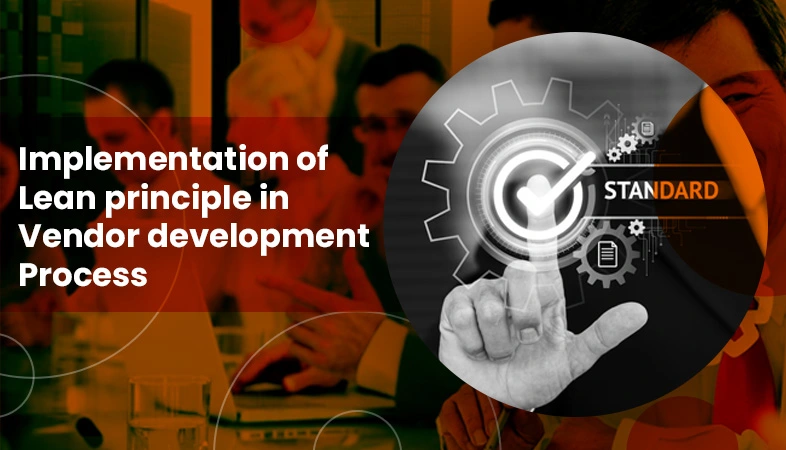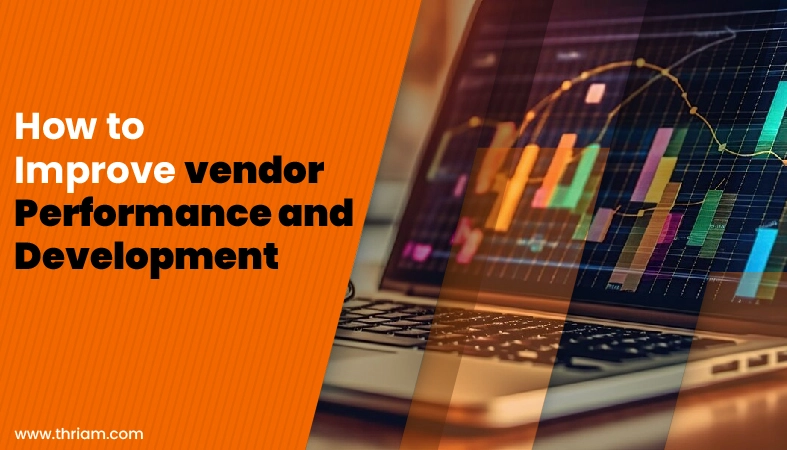The Power of Implementing Lean Principles in Vendor Development

Introduction:
Vendor development processes play a crucial role in the success of any organization. However, these processes often face challenges such as lead time delays, communication issues, and quality concerns. To address these challenges and improve efficiency, many organizations are turning to Lean principles. Lean principles focus on eliminating waste, streamlining processes, and promoting continuous improvement. In this blog post, we will explore how implementing Lean principles in vendor development processes can lead to significant improvements and benefits.
Understanding Vendor Development Processes:
Before delving into Lean principles, let's first understand what vendor development processes entail. Vendor development refers to the process of identifying, evaluating, and working with vendors to develop strong relationships that benefit both parties. This involves supplier selection, contract negotiation, quality assurance, and continuous collaboration. However, these processes often face challenges such as delays, quality issues, and ineffective communication, which can impact the overall supply chain.
Overview of Lean Principles:
Lean principles have transformed various industries and processes, including vendor development, by revolutionizing efficiency, reducing waste, and promoting continuous improvement. Understanding these principles is essential for organizations seeking to optimize their vendor development processes. Let's explore each principle and its significance in the context of vendor development:

1. Just-in-Time (JIT)
The JIT principle focuses on delivering materials and products in the right quantity, at the right time, and in the right place. In vendor development, JIT ensures that vendors supply materials or products precisely when they are needed, minimizing inventory costs and reducing lead times. By synchronizing the supply chain through JIT, organizations can achieve improved responsiveness, cost reduction, and better overall efficiency.
2. Waste Elimination
Waste elimination is a fundamental principle in Lean, aiming to identify and eliminate non-value-added activities. In vendor development, waste can manifest as delays in response times, excessive inventory, overproduction, defects, and inefficient processes. By systematically analyzing vendor development processes, organizations can identify areas of waste, such as excessive paperwork, redundant inspections, or unnecessary communication channels. Eliminating such waste improves productivity, reduces costs, and enhances lead time.
3. Continuous Improvement
Continuous improvement, also known as Kaizen, is a key principle of Lean. It encourages organizations to constantly seek better ways of doing things. In vendor development, continuous improvement involves regularly reviewing and enhancing processes to eliminate bottlenecks, improve communication, and refine decision-making. By fostering a culture of continuous improvement, organizations and vendors can collaborate to find innovative solutions, enhance quality, and optimize lead times.
4. Standardization and Visual Management
Standardization and visual management ensure consistency, clarity, and ease of understanding in vendor development processes. Standardizing processes creates a uniform approach to vendor selection, evaluation, and communication. Visual management includes using visual aids, such as charts, graphs, or visual boards, to provide a clear representation of the workflow, status, and performance metrics. These tools improve transparency, facilitate effective communication, and enable everyone involved to quickly identify issues and take appropriate actions.
5. Respect for People and Teamwork
Respect for people and teamwork is a core element of Lean principles. In vendor development, it emphasizes the importance of collaboration, open communication, and mutual respect between organizations and vendors. Building strong working relationships with vendors fosters trust, promotes knowledge-sharing, and encourages joint problem-solving. By valuing the contributions and expertise of both their own employees and vendors, organizations can achieve more effective vendor development processes and create a win-win situation for all parties involved.
How Lean Principles Transform Vendor Development Processes:
Implementing Lean principles in vendor development processes can yield several benefits. Firstly, it helps streamline supplier selection and evaluation by focusing on key criteria such as reliability, responsiveness, and quality. Secondly, Lean principles enable organizations to reduce lead times in vendor development, resulting in faster response rates and improved overall efficiency. Thirdly, implementing Just-in-Time (JIT) inventory management ensures that vendors deliver materials and products exactly when needed, minimizing inventory holding costs.
Furthermore, Lean principles support waste elimination, which helps identify and eliminate non-value-added activities and reduces defects and rework in vendor processes. By fostering standardized processes and visual management, organizations can improve communication, provide clarity, and enable better collaboration with vendors.
Steps to Implement Lean Principles in Vendor Development Processes:
Implementing Lean principles in vendor development processes can lead to significant improvements in efficiency, quality, and overall performance. To successfully implement Lean principles, organizations need to follow a systematic approach that includes the following steps:
Step 1: Identify Critical Vendor Processes
The first step in implementing Lean principles in vendor development processes is to identify the critical processes that would benefit the most from Lean initiatives. This involves analyzing the entire vendor development process and identifying areas of waste, inefficiency, and bottlenecks. It may be helpful to conduct a value stream analysis to map out the flow of activities and identify areas that can be streamlined or eliminated.
Step 2: Set Clear Goals and Performance Measures
Once the critical processes have been identified, it is important to set clear goals and performance measures for the Lean implementation. These goals should align with the organization's overall objectives and should be specific, measurable, achievable, relevant, and time-bound (SMART goals). Performance measures should be established to track progress and to ensure continuous improvement. This can include metrics such as lead time reduction, defect rates, cost savings, and customer satisfaction.
Step 3: Engage Vendors in Lean Initiatives
Engaging vendors in the Lean initiatives is crucial for successful implementation. Vendors should be educated about Lean principles and the benefits it can bring to their own operations. It's important to foster collaboration and open communication with vendors, encouraging their participation and contribution to the Lean journey. This can be achieved by providing training and resources, conducting joint improvement projects, and establishing performance incentives that align with Lean goals.
Step 4: Provide Training and Support
To ensure that Lean principles are effectively implemented, it is imperative to provide training and support to all employees involved in the vendor development processes. This includes both internal employees and external vendors. Training should cover the basic principles of Lean, waste identification and elimination techniques, problem-solving methodologies, visual management, and continuous improvement. Ongoing support should be provided to address any challenges that arise during the implementation process and to reinforce the importance of Lean principles.
Step 5: Monitor and Sustain Lean Improvements
Implementing Lean principles is not a one-time event; it requires ongoing monitoring and sustaining of improvements. Regular performance reviews and audits should be conducted to assess progress towards the established goals and to identify areas that require further improvement. It is also important to recognize and celebrate successes, as this can motivate employees and vendors to continue embracing Lean principles. Continuous improvement should be embedded in the organization's culture, with regular communication channels for feedback and suggestions from all stakeholders.
Case Studies on Implementing Lean Principles in Vendor Development Processes:
Several real-life examples highlight the successful implementation of Lean principles in vendor development processes.
For instance, Toyota revolutionized the automotive industry by incorporating Lean principles across its entire supply chain. By partnering with vendors who embraced Lean practices, Toyota achieved significant improvements in quality, lead times, and cost reduction. Similar success stories can be found in industries ranging from healthcare to electronics, demonstrating the effectiveness of Lean principles in vendor development.
Overcoming Challenges and Pitfalls in Implementing Lean in Vendor Development Processes:
Implementing Lean principles in vendor development processes may face resistance and challenges. Common challenges include cultural barriers, lack of leadership support, and the fear of change. To overcome these obstacles, organizations should communicate the benefits of Lean implementation, actively involve employees and vendors in the process, and provide the necessary resources and support. Building a Lean culture requires continuous monitoring, feedback, and sustaining Lean improvements to ensure long-term success.
Conclusion
Implementing Lean principles in vendor development processes can have profound benefits for organizations. By streamlining processes, reducing waste, and promoting continuous improvement, Lean principles help organizations achieve greater efficiency, higher quality, and stronger vendor relationships. It is important for organizations to recognize the potential of Lean principles in their vendor development processes, and to constantly evaluate and improve upon the implementation to stay ahead in an increasingly competitive market. By embracing Lean principles, organizations can create a foundation for sustainable growth and success in their vendor development efforts.



